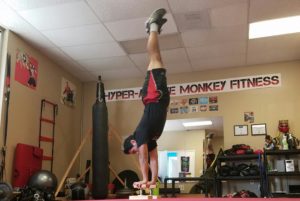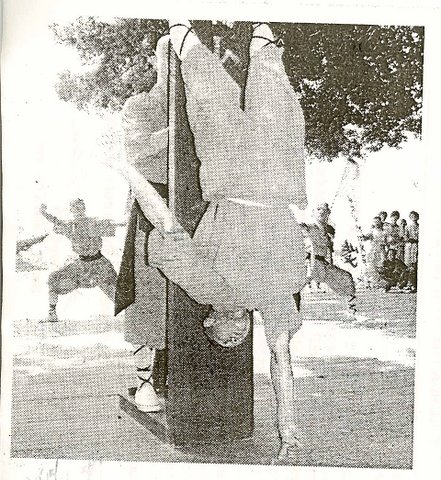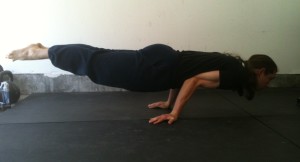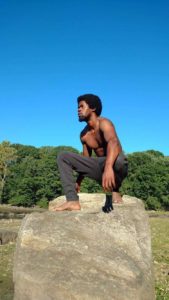Will weight-lifting help you with your hand balancing skill? That’s a tricky question, although not too difficult. The answer is YES and NO.
I’m going to expound on the idea. First off, weight-lifting is a ranged term which can involve power lifting, olympic lifts, bodybuilding, or old-fashioned strength training. A big qualifier on your results is in how you lift.
Certain exercises are going to help you out. And others won’t do much for you.
Specifically for pressing movements. It requires a tremendous amount of strength to be able to push your own body overhead. You need strong triceps, shoulders, and core.
Since many of the inverted presses take you through different planes of movement; not strictly overhead work, like the frogstand press, you will also need strong pectoral muscles in addition to the core.
So strengthening these muscles will make your stunts easier.
Then again hand balancing takes a huge degree balance. While weightlifting can help your coordination, it is nothing compared to what you need to stand on your hands.
Being able to press a heavy barbell overhead has no carryover to being able to hold a handstand.
A handstand is a skill and needs to be practiced in order for you to get good at it.
These days many people are moving away from weights because they think they are not functional. You know what? It just depends on what you’re doing with them.
Whether you decide to build you upper body strength with barbell presses or with handstand pushups is up to you. They both build strength.
So in short, look at what your own goals are and see what will work best for your situation.
If you need some help in getting started, why not check out our Handstand Mastery Course.
Stay Inverted!
-Jonathan Magno














